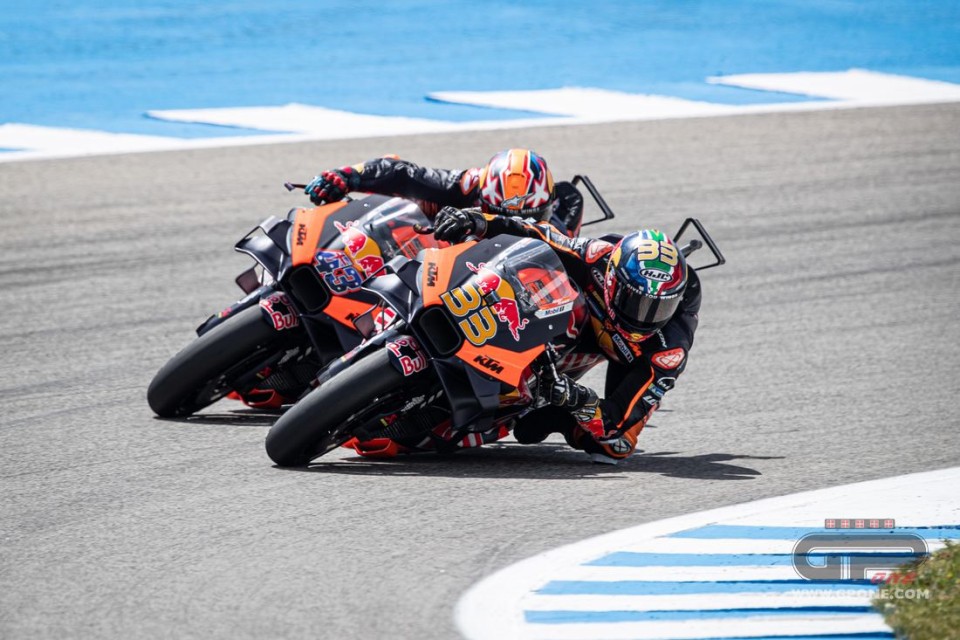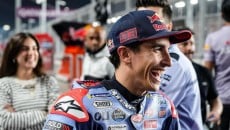The biggest technical innovation in the MotoGP in recent years has been the development of aerodynamics. After the first attempts made by Ducati, all the constructors adapted, starting a wings and spoilers war. By now it's clear that, to have a competitive bike, the aerodynamic package is essential and, in order to refine it, they also turned to the skills of their four-wheeled cousins.
This is the case with the KTM. Starting this year, they’ve begun to collaborate with RBTA, namely, Red Bull Advanced Technologies and, at the head of the aerodynamics department for the Austrian manufacturer there’s a person who has a great amount of experience in the Formula 1: Dan Marshall, who used to work with Force India.
If, once, the shape of a motorcycle was only considered important for maximum speed, now things have changed. “Thanks to our track record over the past five years, we’ve improved our understanding of how a bike works over the entire lap, rather than looking exclusively at straight-line speed, which was the focus of much of the work on aerodynamic performance in the past,” Dan Marshall explained in an interview published in KTM’s blog.
The evolution has been constant and very fast.
“If you look at the aerodynamic evolution of a race bike, then nothing significant happened from the 1960s until the end of the millennium,” Marshall stated. “Even when other brands started putting fins on bikes, they were just bolting them onto an existing fairing. Now we understand a lot more about how the wings and fairing interact, and we don’t consider them independent, but more as a single body working aerodynamically. We’re now trying to cast aside this perception of what a motorcycle should look like and consider what’s better for performance.”
Dan also explains how his collaboration with Red Bull began.
“We asked ourselves, ‘how do we go about winning the world championship? Then take advantage of the fact that there was the possibility of working with Red Bull Advanced Technologies,” his explained. “We didn’t know how it would work initially, but I was fully onboard. Anything to help the race bike go faster around the track. We’re still leading the project and specifying the goals. It has also been a learning experience for them. It’s a two-way partnership and, of course, we’ve been trying to learn as much from them as possible, and they’ve been learning from our greater understanding of motorcycle behavior. I believe they underestimated how detailed and complicated it can be. They didn’t realize the level we’re working at.”
The contribution is huge.
“They have lots of resources, so they’re designing and simulating at a much faster rate. They had our base package from 2022. They started working and then took hold of our 2023 package, which we had developed in-house. They saw what we were doing and honed-in on the performance we found, and they evolved it faster to come up with a next-generation shape,” something we saw in the Sepang tests.
The last question Marshall answered was: What does the future hold?
“I think it could go a couple of ways. In today’s races, we’ve seen a trend to reduce overtaking, and I believe this is partly due to an increase in aerodynamics of the bike and the greater difficulty of getting out of the slipstream and complete the overtake. So, aerodynamics could be banned. Hopefully not. And how can you ban something that is naturally aerodynamic like a race bike pushing through the air? They could follow the F1 route and allow for some active aerodynamics, like a DRS system. I’m not a big fan of DRS or KERS because they manipulation races. One way could be to make room for aerodynamic creativity and freedom, but solving the problems of slipstream and turbulence. They’re still present and probably worse than they were five to seven years ago, because there are so many aerodynamic parts on the bike. The aerodynamic ‘weight’ is getting bigger and bigger, and we need to find a sensible way to keep it under control.”









